Top 10 Most Dangerous Animals In Australia
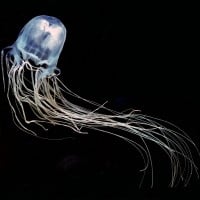 Box jellyfish are cnidarian invertebrates distinguished by their cube-shaped medusae. Some species of box jellyfish produce extremely potent venom: Chironex fleckeri, Carukia barnesi and Malo kingi.
Box jellyfish are cnidarian invertebrates distinguished by their cube-shaped medusae. Some species of box jellyfish produce extremely potent venom: Chironex fleckeri, Carukia barnesi and Malo kingi. What's the most venomous animal out there? This thing. Seriously this thing is terrifyingly deadly. They have these little injectors hidden within their tentacles, and they can pop out (40,000 g's) 10 times faster than a car air bag. Also they're hundreds on each tentacle, and they're hundreds of tentacles on a Jellyfish. Also death is incredibly quick. Interestingly, Box Jellyfish venom can be treated with vinegar.
It would be fun to be one! Being like "haha I get to swim around this place stingin peeps without worrying about venomous jellyfish"
Not just Australias most deadly creature. The most deadly creature worldwide! It can kill you in 2 minutes!
Not surprised this is number one! I'm not some austraillian expert but I know that these are VERY deadly!
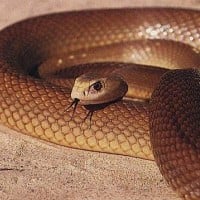 The Inland Taipan, is a venomous snake of the taipan genus commonly found in semi-arid regions of central east Australia. The inland taipan is not just a venomous snake it's considered the most venomous snake in the world by many people. When compared drop for drop and based on the median lethal dose value in mice, its venom is by far the most toxic of any land snake or even sea snakes. Although extremely venomous and a very capable striker, contrary to the rather aggressive nature of its relative the coastal taipan, this serpent is usually quite a shy and reclusive snake species. With its placid disposition it prefers to escape from trouble, but it will defend itself and strike if mishandled, ...read more.
The Inland Taipan, is a venomous snake of the taipan genus commonly found in semi-arid regions of central east Australia. The inland taipan is not just a venomous snake it's considered the most venomous snake in the world by many people. When compared drop for drop and based on the median lethal dose value in mice, its venom is by far the most toxic of any land snake or even sea snakes. Although extremely venomous and a very capable striker, contrary to the rather aggressive nature of its relative the coastal taipan, this serpent is usually quite a shy and reclusive snake species. With its placid disposition it prefers to escape from trouble, but it will defend itself and strike if mishandled, ...read more. By far the most venomous snake in the world. 1 drop is enough to kill 100 people. However there are good news. This snake only lives in The Outback and they're incredibly shy. So the Fierce Snake that you once thought it was wasn't so fierce after all.
Very deadly this could stop you from breathing
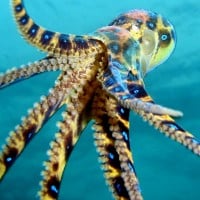 The Blue Ringed Octopuses (Hapalochlaena) are the four strongly venomous species that are found on the coral reefs and tidal pools in the Pacific and Indian Ocean, particularly from Australia to Japan. It is known as one of the most poisonous and deadliest sea creatures. It can kill a human body by ...read more.
The Blue Ringed Octopuses (Hapalochlaena) are the four strongly venomous species that are found on the coral reefs and tidal pools in the Pacific and Indian Ocean, particularly from Australia to Japan. It is known as one of the most poisonous and deadliest sea creatures. It can kill a human body by ...read more. Another serious threat for those that wish to explore the waters of Australia is the blue-ringed octopus � one of the most toxic sea creatures in the world found off the coast of Australia, New Guinea, Indonesia, and the Philippines. Even though the octopus is only the size of a golf ball, there is no known antidote for its powerful venom. It causes motor paralysis, eventually leading to cardiac arrest. First aid treatment consists of pressure on the wound and mouth-to-mouth breathing that can last for several hours.
Their blue rings are very harmful!
With one fufufnuvfvnufvnfuv you can kill 23 persons jsnwusnwsuhnun
Stepping on these fish are painful as hell! And the worst part, you'll likely never notice them because their camouflage is too damn perfect! It's the most venomous fish in the sea. However, if you do step on this fish, you can cure the pain with hot water.
The stone fish is the worlds most dangerous fish. You can unknowingly step on one which makes the venom go on your foot. You can die in two hours.
The stone fish is so poisones you have to run to the hospital in 10 Minutes and get so treated it is so poisones
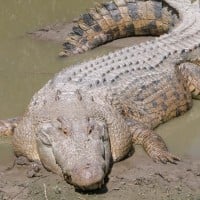
Out of all the animals in Australia, I don't think there's any animal that can cause more brutal deaths than this crocodile. Crocodiles have a bite strength of about 5000lbs per square inch. That's the strongest bite in the animal kingdom. Not enough? Well they bite your leg, then they hang on to it, and then they spin their bodies around, dragging you around along with them. The crocodile doesn't stop until something like a leg tears off. Imagine your leg being hang onto by a crocodile's powerful jaw, then having your body constantly spinning around, splashing your face on the bloody water, and this death ride doesn't stop until your leg comes off. After your leg comes off, the crocodile throws you off balance, pushes you underneath the water, and then it leaves you there to drown or bleed to death. Surviving is incredibly unlikely. They strike at the most unpredictable moments and unpredictable speeds, they're super aggressive, and they kill thousands of people a year. Also don't ...more
They are fast as hell! They could eat you in a minute. They aren't like alligators who can actually be kind of docile if they have eaten. Crocs don't care if they have eaten. They are gonna eat you too! Fast!
Intelligent, stealthy, fast and unimaginably powerful! A run-in with a Salty would give you a 10% chance of survival. There is no antidote for a Croc unlike Box Jellyfish and Taipans.
Once they got grip of you your dead un less your hulk saltwater croc strongest bite in the animal kingdom!
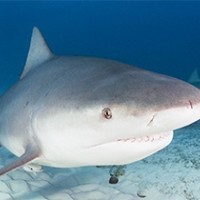 The bull shark is a requiem shark that is considerably dangerous. These sharks live in both freshwater and saltwater environments. Bull sharks can be recognized by seeing a shark in freshwater and watching the shark due a hit and run.
The bull shark is a requiem shark that is considerably dangerous. These sharks live in both freshwater and saltwater environments. Bull sharks can be recognized by seeing a shark in freshwater and watching the shark due a hit and run. This is the only shark that can live in rivers.
Great White Sharks are way scarier!
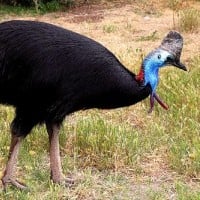 The cassowaries are ratites in the genus Casuarius and are native to the tropical forests of New Guinea, nearby islands, and northeastern Australia.
The cassowaries are ratites in the genus Casuarius and are native to the tropical forests of New Guinea, nearby islands, and northeastern Australia. Cassowaries just won't attack people but there also capable of gutting dogs and small horses. Another fact is that these animals are the 3rd tallest and 2nd heaviest living birds.
As an Australian I can totally imagine a war charge on these. Light horse, more like Light cassowary
Hello don't ever mess with cassowaries they are so danngegerous
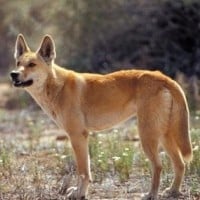 The dingo is a wild dog found in Australia. Its exact ancestry is debated, but dingoes are generally believed to be descended from semi-domesticated dogs from East or South Asia, which returned to a wild lifestyle when introduced by Aborigines into Australia.
The dingo is a wild dog found in Australia. Its exact ancestry is debated, but dingoes are generally believed to be descended from semi-domesticated dogs from East or South Asia, which returned to a wild lifestyle when introduced by Aborigines into Australia. Actually, yes, these animals are very dangerous. One of Australia's deadliest dogs. I remember reading a book about how people got attacked by them and to stay away from them. A boy was killed and his younger brother got wounds to the legs. Ten years later, a little girl was waiting for a boat, and she wandered off. Dingos attacked her and her legs were hurt terribly. Her wounds could have been infect too, if she wasn't treated in time. When your in Australia, WATCH OUT! Also, dingos are found in Fraser Island so STAY AWAY!
They are one of the most powerful dogs in the world.
The name is not misleading. These disgusting creatures, upon occasion, lay eggs in your blood stream. Those who are allergic suffer even more and can die within days. That will scare a lot of people.
Several human deaths have been attributed to them. Their venom, a complex concoction of hundreds of different toxins, is delivered via a harpoonlike tooth propelled from an extendable proboscis. There is no antivenin for a cone snail sting, and treatment is limited to merely keeping victims alive until the toxins wear off.(Nat. Geo., Geographic Cone)
I like to imagine the Cone Snail laughing at peoples' faces who pick them up and think they're beautiful and harmless, only then to harpooned by this thing.
It shoots harpoons
These guys have seriously dangerous. Also they're enormous, and so are their fangs. Their fangs are longer than an Eastern Brown Snake's fangs (at least from what I've), and the Funnel Web Spider's fangs are strong enough to bite through fingernail. They're also super aggressive.
It can make you have trouble breathing and you can die
It can kill and make your heart stop
This should be number 1
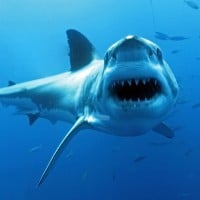 The great white shark (Carcharodon carcharias), also known as the white shark, white pointer, or simply great white, is a species of large mackerel shark which can be found in the coastal surface waters of all the major oceans. It is notable for its size, with larger female individuals growing to 6.1 m (20 ft) in length and 1,905–2,268 kg (4,200–5,000 lb) in weight at maturity. However, most are smaller; males measure 3.4 to 4.0 m (11 to 13 ft), and females measure 4.6 to 4.9 m (15 to 16 ft) on average. According to a 2014 study, the lifespan of great white sharks is estimated to be as long as 70 years or more, well above previous estimates, making it one of the longest lived cartilaginous ...read more.
The great white shark (Carcharodon carcharias), also known as the white shark, white pointer, or simply great white, is a species of large mackerel shark which can be found in the coastal surface waters of all the major oceans. It is notable for its size, with larger female individuals growing to 6.1 m (20 ft) in length and 1,905–2,268 kg (4,200–5,000 lb) in weight at maturity. However, most are smaller; males measure 3.4 to 4.0 m (11 to 13 ft), and females measure 4.6 to 4.9 m (15 to 16 ft) on average. According to a 2014 study, the lifespan of great white sharks is estimated to be as long as 70 years or more, well above previous estimates, making it one of the longest lived cartilaginous ...read more. Dangerous in strength, but not very dangerous in Human deaths. Seriously, shark attacks are so rare. You're 30 times more likely to be struck by lightning.
They are pretty much all over the world
They arnt the most venomous snake in Australia but will still kill a man in around an hour and much more agrresive than any other snake so it should be higher than the inland tipan because that species of tipan doesn't come across people and is less dangerous
It will bite you and kill you your death might be sudden. they are one of the most poisons animals in Australia.
It is very true
 Humans (Homo sapiens) are the most abundant and widespread species of primate, characterized by bipedalism and large, complex brains. This has enabled the development of advanced tools, culture, and language. Humans are highly social and tend to live in complex social structures composed of many cooperating and competing groups, from families and kinship networks to political states. Social interactions between humans have established a wide variety of values, social norms, and rituals, which bolster human society. Curiosity and the human desire to understand and influence the environment and to explain and manipulate phenomena have motivated humanity's development of science, philosophy, mythology, ...read more.
Humans (Homo sapiens) are the most abundant and widespread species of primate, characterized by bipedalism and large, complex brains. This has enabled the development of advanced tools, culture, and language. Humans are highly social and tend to live in complex social structures composed of many cooperating and competing groups, from families and kinship networks to political states. Social interactions between humans have established a wide variety of values, social norms, and rituals, which bolster human society. Curiosity and the human desire to understand and influence the environment and to explain and manipulate phenomena have motivated humanity's development of science, philosophy, mythology, ...read more. A few of these are safer in North America. As the Olsen girls visit Australia (in the 2000 film, Our Lips Are Sealed), the teens are greeted by some of them during the sisters' witness protection program as the girls discover a crime.
The most dangerous "animal" doesn't only hurt other animals, but hurts it's own species, and is destroying nature.
Though Inland Taipan are more venomous Eastern Brown Snake kill more
This should be much higher up.
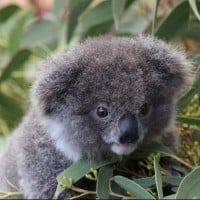 The koala is an arboreal herbivorous marsupial native to Australia. It is the only extant representative of the family Phascolarctidae and its closest living relatives are the wombats.
The koala is an arboreal herbivorous marsupial native to Australia. It is the only extant representative of the family Phascolarctidae and its closest living relatives are the wombats. They could scratch you but probably only able to kill a newborn.
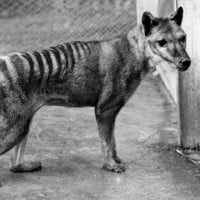 The thylacine was the largest known carnivorous marsupial of modern times. It is commonly known as the Tasmanian tiger or the Tasmanian wolf.
The thylacine was the largest known carnivorous marsupial of modern times. It is commonly known as the Tasmanian tiger or the Tasmanian wolf. They are extinct but were deadly wolves
If it were alive I would feed it chicken.
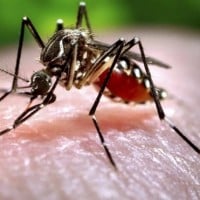 Spanish for "small fly," mosquitoes are insects that have been known to cause various diseases. A sample of diseases caused by mosquitoes: malaria, yellow fever, Chikungunya, West Nile virus, dengue fever, filariasis, Zika virus.
Spanish for "small fly," mosquitoes are insects that have been known to cause various diseases. A sample of diseases caused by mosquitoes: malaria, yellow fever, Chikungunya, West Nile virus, dengue fever, filariasis, Zika virus. I love australia
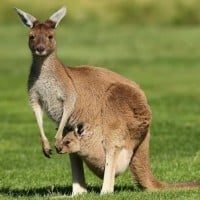 The kangaroo is a marsupial from the family Macropodidae. In common use the term is used to describe the largest species from this family, especially those of the genus Macropus: the red kangaroo, antilopine kangaroo, eastern grey kangaroo, and western grey kangaroo.
The kangaroo is a marsupial from the family Macropodidae. In common use the term is used to describe the largest species from this family, especially those of the genus Macropus: the red kangaroo, antilopine kangaroo, eastern grey kangaroo, and western grey kangaroo. Only 1 person has ever died from a kangaroo because we know how to treat them
Get kicked and you won't hop another day.
Death Adder is also one of the most evil video game villains of all time. He appeared in Golden Axe for Sega Genesis. He should be in the top 10 most evil video game villains list along with Ganondorf, Dr. Cortex, Team Rocket, The Mediogre, Xenmas and Tabuu.
One bite and your dead sometimes
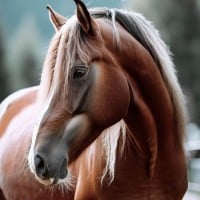 The horse is an odd-toed, hoofed mammal of the taxonomic family Equidae whose sole major subspecies (Equus ferus caballus) is a domesticate, although wild subspecies have survived into the modern period. All subspecies, including the two extant ones, descend from the Pleistocene Equus ferus. The horse has evolved over the past 45 to 55 million years from a small multi-toed creature, Eohippus, into the large, single-toed animal of today. Humans began domesticating horses around 4000 BC, and their domestication is believed to have been widespread by 3000 BC. Horses in the subspecies caballus are domesticated, although some domesticated populations live in the wild as feral horses. These feral ...read more.
The horse is an odd-toed, hoofed mammal of the taxonomic family Equidae whose sole major subspecies (Equus ferus caballus) is a domesticate, although wild subspecies have survived into the modern period. All subspecies, including the two extant ones, descend from the Pleistocene Equus ferus. The horse has evolved over the past 45 to 55 million years from a small multi-toed creature, Eohippus, into the large, single-toed animal of today. Humans began domesticating horses around 4000 BC, and their domestication is believed to have been widespread by 3000 BC. Horses in the subspecies caballus are domesticated, although some domesticated populations live in the wild as feral horses. These feral ...read more. They aren't native to Australia and aren't that dangerous.
They are related to the zeabra and a zeabra can killa lion and a horse can kill a snake if their fast.